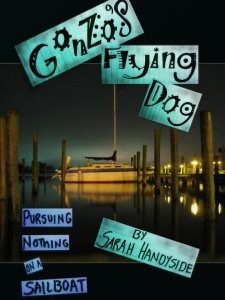Books
My books demonstrate the basic skills required of any journalist. They highlight my propensity for observation and listening. They showcase my research, fact-checking, writing, and editing skills. They show that I can synthesize research and raw lived experience to craft an engaging narrative. But good journalism requires a little more than the basics. It requires adaptability and resourcefulness. It requires not just a willingness but a desire to sacrifice safety, comfort, and convenience and immerse oneself in unpredictable and sometimes life-threatening situations.

Occupy the Highway
Published 2012
In November of 2011, twenty-four Occupy Wall Street protestors marched from Zuccotti Park in Manhattan to Washington, D.C. Upon arrival, seven of those marchers formed a mobile occupation called Walkupy and continued on, arriving in Atlanta, Georgia, in late January. Starting with only $500 and living off donations from supporters, Walkupy marched 1,000 miles in two-and-a-half months. Their goal was to raise awareness about income and wealth inequality in the United States and teach the concept of horizontal democracy.
Occupy the Highway is the journal of Sarah Handyside. It chronicles the entire trip, day by day, detailing everything from blisters to the insides of jail cells. It tells of frozen nights spent in abandoned buildings, and the miraculous hospitality of complete strangers. It's a story of camaraderie amid diversity and a picture of the challenges inherent in mobile communal living. Throughout Occupy the Highway, marchers demonstrate dedication, determination, and conviction. They sacrifice their health, comfort, and safety in support of their ideals.
Occupy the Highway demonstrates that I care about social justice enough to immerse myself in a movement and stick with it—even if I must risk my health and physical freedom to do so.
“It's been years since I read a book from start to finish. I couldn't put this book down! Sarah's writing has become a pleasant addiction of mine. Sarah lets you inside her head, her life, and her thoughts… She brilliantly paints a picture with her words… You get a feel for all the trials and tribulations… She gives you the good, the bad and the ugly of it all.” –Ravenwolf

Renovating Vonnegut
The Vonneguts were influential citizens in Indianapolis in the late 1800s. They were among the architects of its social and physical landscape. Between 1880 and 1920, they built a village of summer cottages on Lake Maxinkuckee in Culver, Indiana. Number 814 East Shore Drive is of them. Built in 1890, it was on the verge of demolition by 2013. A graduate of Culver Military Academy bought the house to save it from destruction, then tasked a group of friends with its restoration. They demolished and rebuilt nearly half the house, living in it all the while.
When I arrived to investigate the history of number 814, I found myself surrounded by a culture of affluence I could not relate to. My first impulse was to expose the summer residents of the shores of Lake Max as lazy, superficial conformists. But my research revealed that those who built Culver and become its leisure class were nothing of the sort. Like me, they were rebels out to build better lives than the ones they had been prescribed. Renovating Vonnegut combines the story of the restoration of number 814 with inspiring histories of Lake Max, Culver Military Academy, and the family of author Kurt Vonnegut Jr.
Renovating Vonnegut highlights a willingness to set aside assumptions, dig past stereotypes, and find common ground with the people and communities I cover.

Gonzo's Flying Dog
Published August 2014
Gonzo’s Flying Dog is the story of two penniless hitchhikers who dreamed of sailing the world. My partner and I had never even set foot on a sailboat, much less did we know how to pilot one. We hitched a ride to New Orleans, got jobs at a supermarket, saved a few thousand dollars, and bought a 26-foot sloop on eBay. We traveled to Maryland to claim it, moved our few worldly possessions aboard, and taught ourselves to sail. It took us nine months to travel the Atlantic Intracoastal Waterway from Chesapeake Bay to Key West, Florida.
And it was easier said than done. We spent our first three days on board thrashing about in our v-berth as Gonzo pitched and rolled on the steep waves of a storm-tossed Chesapeake. Our first attempt at docking was more like playing pinball with a boat and four pilings. I remember anchor line sawing across my frozen fingers and water swamping the inflatable kayak we used to dinghy to shore. I remember the horror-inducing sound of Gonzo’s keel striking a shoal during a midnight storm, the terror that rushed through my veins as water gushed into the galley. Most of all, I remember the satisfaction of teaching myself to sail and the incomparable beauty of those rare moments when everything went right.
Gonzo’s Flying Dog demonstrates patience in the face of constant inconvenience and perseverance in the face of discomfort, danger, and downright fear. It highlights my ability to adapt to constant change and overcome challenges using inadequate tools and extremely limited resources.
“This is a great book… [Sarah Handyside’s] voice is distinctive, independent, crisp. The descriptions are striking, the sailing moves the story along… The development of her relationship with Garth is wonderfully well done. Fiction writers could learn a lot from this. I know, I am one.” –K. Oneill
